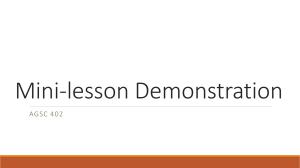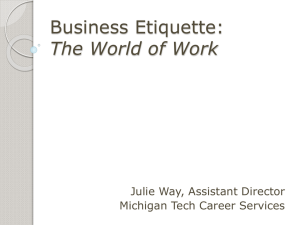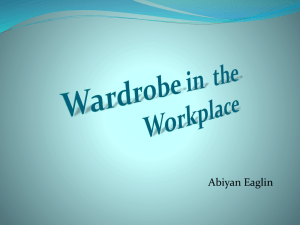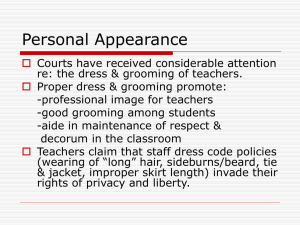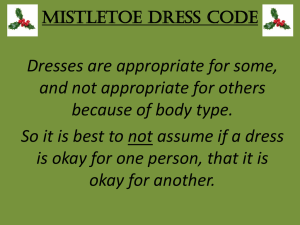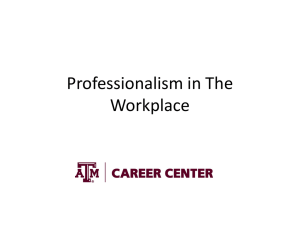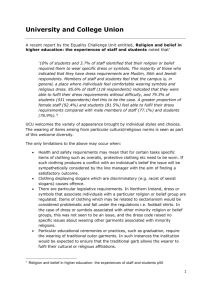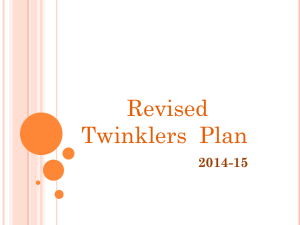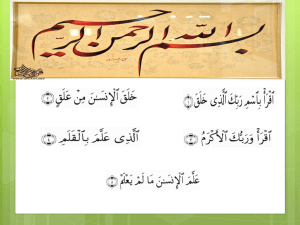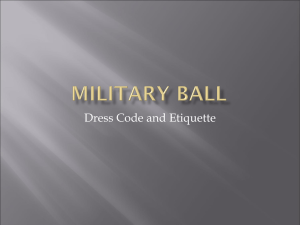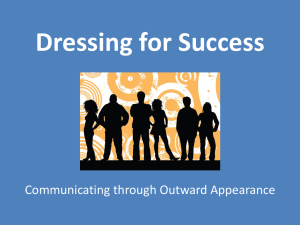Hannah Women in Islamic Society (new window)
advertisement
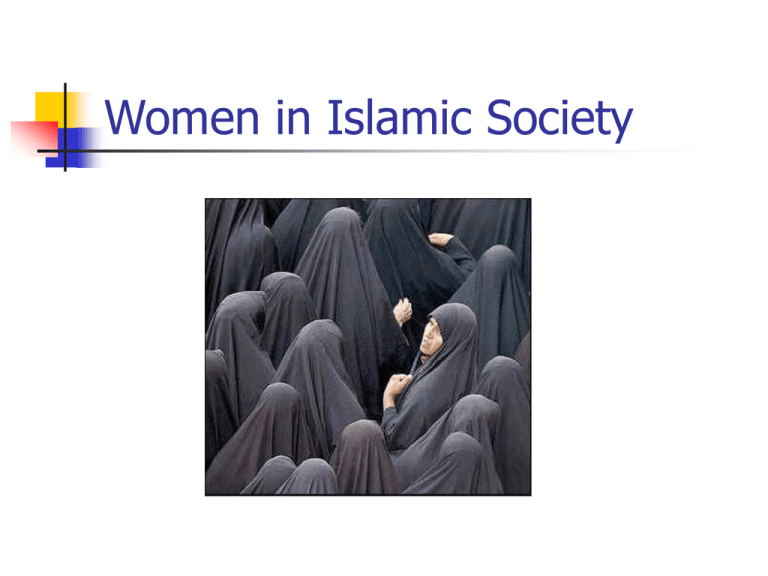
Women in Islamic Society History of Women in Islam Islam began in Arabia in the early 600s, ever since then there have been shifting social, economic, and political views about women Women were caught between traditionalists and reformers There was a strong patriarchal government that discriminated against women in politics Women were viewed as a man’s property not as an individual History continued Women didn’t have a say in who they married Dowries were always paid to male relatives of the bride Women were not educated Female infanticide was a common tradition Polygyny was practiced widely throughout Islamic societies A Brief Definition of Polygamy Polygamy is the practice of having multiple spouses Polyandry is the practice of having multiple husbands Polygyny is the practice of having multiple wives Women and the Quran The Quran says that men and women are equal in the eyes of Allah however men are “a degree above” women It also says that women must be respectful of men and dress modestly unless in the company of their husband, servants, or children A woman who’s husband goes to hell must accompany him to hell no matter her actions One man is equal to two women Marriage Women are married often as teens Marriage is viewed as a legal contract not a religious sacrament Betrothal is allowed only with the consent of both the man and the woman One man may have up to three partners but legally only one wife The dowry is paid to the bride not her father Divorce If a man wants to divorce his wife he must announce it three times then wait three months to divorce his wife unless she is pregnant in which case he must wait until the child is born Women may remarry Ill-treated women may divorce their husbands Family Women are expected to control the affairs of the home Children are taught that they must obey and respect their mothers Birth control is now acceptable in Islamic society Education In recent years girls are now given full time education Girls attend Mosque schools and attend separate classes than boys Women are now permitted to attend universities The Tradition of Dress Hijab is the veil used to cover the head that originated from the Byzantines The Tradition of Dress Chadors are a type of dress that leaves the face open but covers the entire body The Tradition of Dress Burkas are a type of dress that covers the entire body and face with the idea that women are should be able to see but not be seen Modern Dress Modern versions of traditional dress include head scarves and long sleeves More Modern Dress Modern dress is also colorful opposed to the black robes of classical times Politics During the 20th century the majority of Muslim countries gave women the right to vote In 1988 Benazir Bhutto was elected prime minister of Pakistan becoming the first women to lead a Muslim country She was followed by Khalaeda Zia in Bangladesh and then Tansu Ciller in Turkey Religion In mosques there are usually separate rooms where men and women pray; if not the women must sit behind the men Women are now allowed to worship at home so they may care for their children Women must follow the rules of fasting like the men unless they have young children or are pregnant In the Workplace Women are not forced to work but rather they choose to get jobs to help support their families Many women work in factories because they were not educated otherwise Women’s Rights Own land Inherit property from deceased relatives Divorce husbands Run businesses The End


